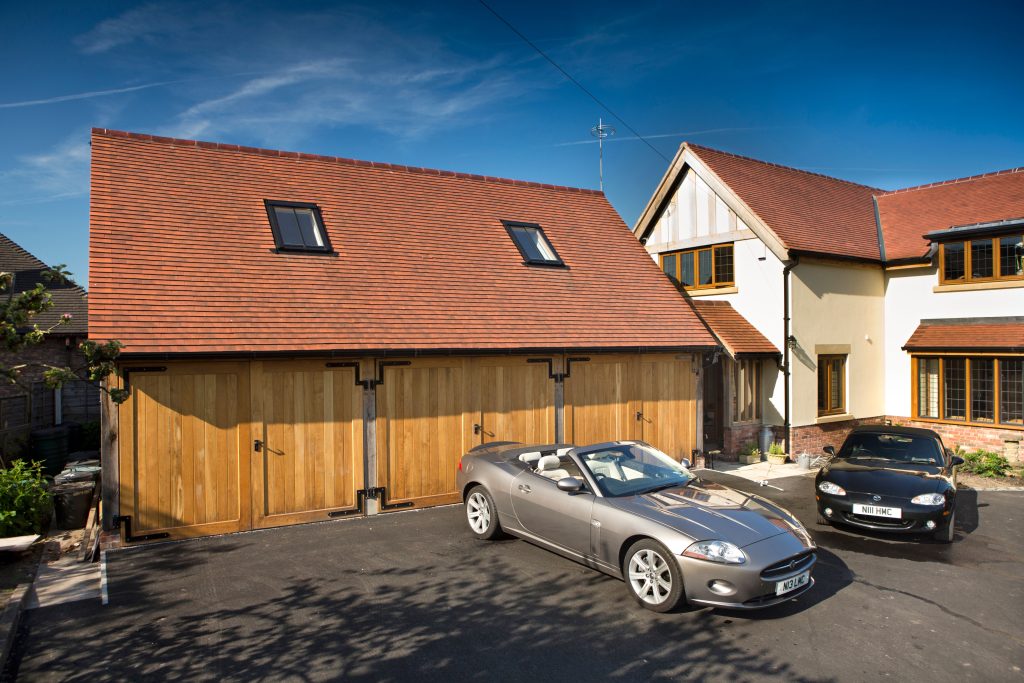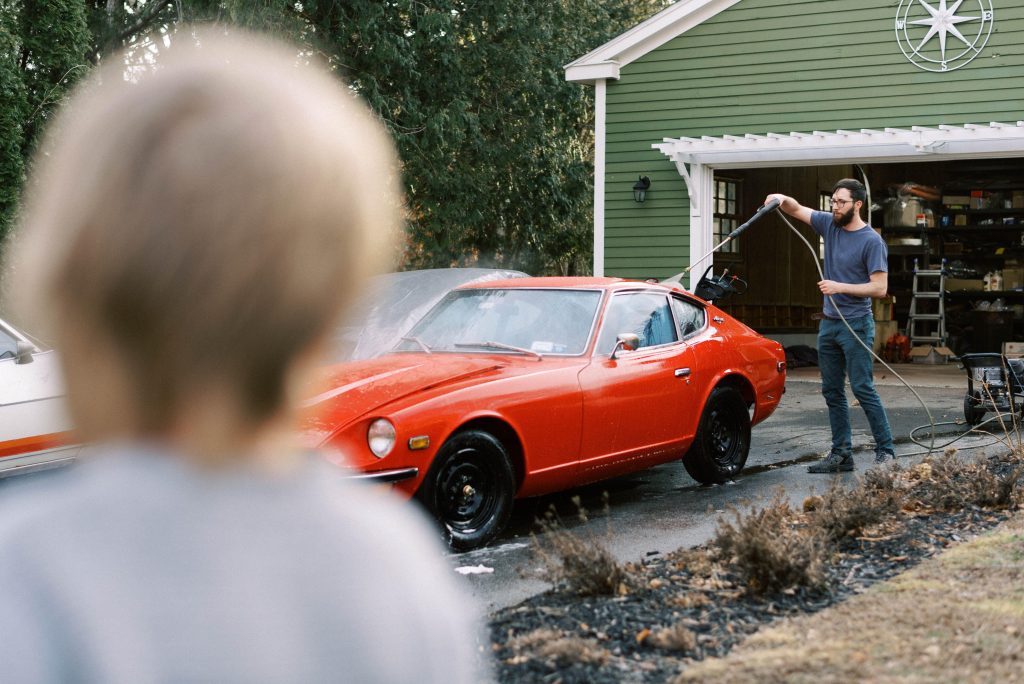Author: Nathan Chadwick
Images: Alamy

When it comes to looking after your classic car, a purpose-built garage is one of the most effective ways to ensure that it remains in pristine condition. A proper garage can also help reduce insurance costs too!
Aside from protecting your car from the elements, it is great for storing all your tools and equipment in one convenient location. Depending on available space and budget, a modern car garage can be customised in a variety of different ways; there are also a number of options when it comes to building the structure. Let’s take a closer look at what each of these methods entail…
New Builds
This method tends to involve the most cost and effort, and if the garage will be free standing then electricity cables and possibly water lines will have to be piped into the new building.
A concrete foundation, external walls, garage doors and a roof structure with guttering and adequate drainage will all need to be taken into consideration.
The garage wall thickness will dictate the level of insulation you will get, and pay particular attention to the pitch of the roof if you live in an area where snowfall is common. Adequate ventilation is important to prevent the air from becoming too humid in the summer months – this should be factored into the build from the outset.
Standard-size garages tend to fit an average sized vehicle with little room left over for much else. Extending the length or width of the garage may cost a bit more, but it will allow you to accommodate a variety of vehicles and make getting in and out of the car a whole lot easier.
Angling the floor towards the garage door slightly will make it easier to hose the floor out. A pit can also be factored into the build if you do not want to lift the car up on to a jack every time you need to take a look underneath. There are a number of companies that offer prefabricated pits which include lighting, built-in sumps, jacking rails and anti-slip steps. You will still have to get a contractor to dig the hole though.
Installing an electric garage door is a great feature that saves a lot of back-bending and fumbling around in poor weather conditions. Aluminium or steel doors require less maintenance than wooden ones but they can dent easily. Vertically rolling doors allow for a car to be parked closer to the garage when it is outside.
It is worth noting that a detached garage in the UK does not require planning permission if it is single storey, covers no more than half of the total area of the land around the house, does not sit forward of the principal elevation and is not more than a maximum of four metres high.

Your average classic car is generally quite a bit smaller than a modern equivalent but sizes do vary greatly so it is worth measuring your specific vehicles dimensions beforehand. As an example, a Bentley Turbo R is 17-feet in length and 6-feet wide, while an air-cooled Porsche 911 is approximately 13.7-feet long and only 5.2-feet wide. It is best to add at least 3-feet around the car and it may be wise to cater for something a bit larger even if your current classic happens to be a Mini Cooper.
House Extensions
This method will require a similar level of commitment as if you were adding an additional room to your house, but using the existing wall and foundation may lower overall costs.
Whether you plan to build a free-standing structure or an addition, you can choose to go it alone to save on costs. This is a big undertaking and professionals will still have to install the electrical systems and sign off on the structure.
Wooden Buildings
A wooden garage can be an aesthetically pleasing and more cost-effective solution than building one out of brick, but a solid foundation is still necessary and the structure may need extra care over the years.
There are various sizes to pick from and some companies offer up to triple-sized garages with additional workspace if required. Some offer the option to construct the building yourself, which can save up to 20 per cent on the final costs.
Carports are also a viable option and do keep the majority of the sun and rain off your car but they offer no security and you should still use a car cover. Some companies offer a carport structure with the ability to add walls and garage doors at a later date – a useful option if you need to spread the building costs over a longer period.

The Multiple Car Garage
If you are looking to store a number of cars under one roof then you have the option of constructing a larger wooden or aluminium/steel structure. Many specialists offer bespoke structures and can add loft storage and workshop sections if required.
A metal structure will be more susceptible to temperature changes but can be more cost effective to construct. Installing doors on opposing walls will make it easier to manoeuvre your vehicles around once inside, and, if your budget allows, rotating pedestals, tiled floors and air-conditioner units can make for a very luxurious classic car garage.
Condensation is also an issue that should not be overlooked – proper ventilation and a dehumidifier can make a big difference to aging bodywork, and using wood instead of steel or concrete can also help mitigate this issue. If your garage is built from concrete there are a number of quality waterproofing coatings for both the walls and floors that are well worth investing in.
Safety should not be overlooked, especially if you have a number of priceless classics stored under one roof. Fire retardant materials in the walls and a fire extinguisher system are essential in any larger build, and theft-proofing measures such as burglar bars and manually lockable garage doors are a good idea too.
Have you recently invested in a new garage, or are you considering doing so in the near future? Have you recently given your garage a makeover? If so, we would love to hear about your latest project at hdc@hagerty.co.uk